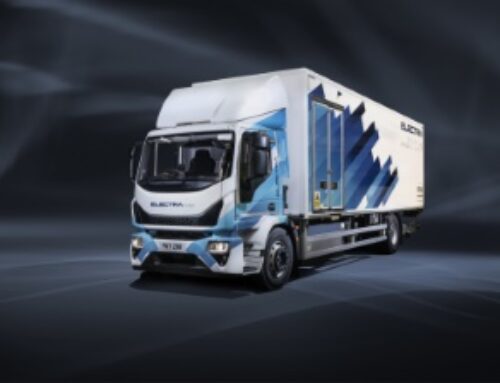5 ways VR can help speed up driver training
 Tom McGhie, managing director at Easy As HGV, offers his take on the benefits of virtual reality training resources
Tom McGhie, managing director at Easy As HGV, offers his take on the benefits of virtual reality training resources
Last year, the HGV industry faced an overwhelming shortage of drivers. Following major disruption from both the Covid-19 pandemic and Brexit, an estimated shortfall of 100,000 HGV drivers was piling pressure on supply chains and contributing to empty petrol pumps and barren supermarket shelves.
We needed to help a growing backlog of trainees qualify, and fast, to get a sufficient number of vehicles back on the road.
At Easy As HGV, we took an innovative approach by partnering with immersive training specialists, Virti, to create bespoke virtual reality (VR) training resources that would help candidates qualify more quickly.
The VR simulations support candidates through some of the core safety procedures and manoeuvres required to obtain their licence. Since January 2022, we have seen around 500 candidates complete their driver theory supported by access to the VR training material.
While the HGV driver shortage is certainly beginning to improve, the cost of living crisis is now amplifying the impact of even the slightest supply chain disruption. So it’s more important than ever for transport providers to begin innovating and adapting training to get more drivers behind the wheel.
Below, we share five ways providers can harness new technologies to speed up driver training and tackle the ongoing crisis.
1. Targeting the most common obstacles
When developing any new training material, you want to ensure it will have the greatest impact possible. New resources should therefore target areas of training where drivers currently need the most support.
Take time to review current training practices, speak to trainees and instructors, and identify the specific areas with which learners tend to struggle.
For our drivers, it was the pre-drive vehicle checks and reversing manoeuvres that candidates struggled with the most, so these are the VR simulations we created first. By focusing new material or technologies on key problem areas, you will be able to tackle the biggest barriers slowing down qualification more quickly.
 2. Enabling greater hands-on experience
2. Enabling greater hands-on experience
One of the most common problems we found our candidates were experiencing – especially since the restrictions introduced during the pandemic – was the inability to practise manoeuvres themselves.
Learners would be shown how to do the manoeuvre once on-site and then have to rely on theory and memory alone to revise ahead of the test. We wanted to make it possible for learners to practise repeatedly and gain more hands-on experience before taking their test.
Using VR, it is possible to create fully immersive, interactive simulations in which learners can revise the key steps in manoeuvres in a safe, realistic and risk-free virtual environment.
Augmented reality (AR) overlays can be added to each simulation to provide prompts which guide learners through the manoeuvre virtually. This enables them to make decisions in real time (as they would during the test) – and is much more effective at helping learning stick.
3. Widening access to training
A lasting legacy of the pandemic for most industries will be the increase in remote working, and its proof of the importance of accessibility. HGV driver training is no exception!
To widen access to training, it’s essential to provide candidates with tools that enable them to learn independently. VR training resources that can be accessed on learners’ own mobile or desktop devices mean training exercises can be completed from wherever and whenever suits them best.
For example, candidates can practise the process for reversing a vehicle from the comfort of their own home.
Not only does this encourage regular practice – building both confidence and driver safety – but it enables learners to work at their own pace and complete the course more quickly.
4. Building training for the long-term
 With so much change across the industry over the past two years, there is no doubt that more is yet to come. As HGV services continue to evolve, so too will the driver training needed to support them. Potential new government regulations will need to be reflected in training courses, and modules adapted in line with industry changes.
With so much change across the industry over the past two years, there is no doubt that more is yet to come. As HGV services continue to evolve, so too will the driver training needed to support them. Potential new government regulations will need to be reflected in training courses, and modules adapted in line with industry changes.
It’s absolutely crucial that training resources are adaptable and can be easily re-moulded to reflect evolving requirements at minimal cost. By using a VR platform to host training content, you can easily create new resources (and adapt old ones) as and when needed.
No-code platforms like Virti enable providers to easily create their own content and update existing resources. Training resources can be fully tailored and easily scaled to provide a cost-effective and lasting solution.
5. Retaining your existing drivers
As we continue the recruitment drive to get more HGV drivers back on the road, it’s important not to forget the importance of retention. Continued calls for improved conditions highlight just how vital it is for sufficient support to be given to drivers to remain in the industry once they’ve completed their training.
Studies have shown that VR can improve performance by up to 230 per cent. It also helps to improve driver confidence. By providing drivers with ongoing access to interactive and immersive training, we can create a culture of continuous development across the industry which ultimately empowers drivers to be happier, safer and more fulfilled in their roles.
While driver shortages continue, changes to the way we deliver HGV driver training will remain essential. We have the tools at our disposal to significantly transform and update training practices to reflect the evolving industry and strengthen both recruitment and retention.
By committing to innovating and making these simple changes, we can support drivers new and old to remain in the industry and protect it against future challenges.










